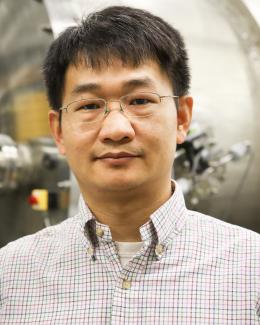Abstract
While solution micellization of ionic block copolymers (BCP) with randomly distributed ionization sites along the hydrophilic segments has been extensively studied, the roles of positionally controlled ionization sites along the BCP chains in their micellization and resulting micellar structure remain comparatively less understood. Herein, three amphoteric polypeptoid block copolymers carrying two oppositely charged ionizable sites, with one fixed at the hydrophobic terminus and the other varyingly positioned along the hydrophilic segment, have been synthesized by sequential ring-opening polymerization method. The presence of the ionizable site at the hydrophobic segment terminus is expected to promote polymer association toward equilibrium micellar structures in an aqueous solution. The concurrent presence of oppositely charged ionizable sites on the polymer chains allows the polymer association to be electrostatically modulated in a broad pH range (ca. 2–12). Micellization of the amphoteric polypeptoid BCP in dilute aqueous solution and the resulting micellar structure at different solution pHs was investigated by a combination of scattering and microscopic methods. Negative-stain transmission-electron microscopy (TEM), small-angle neutron scattering (SANS), and small-angle X-ray scattering (SAXS) analyses revealed the dominant presence of core–shell-type spherical micelles and occasional rod-like micelles with liquid crystalline (LC) domains in the micellar core. The micellar structures (e.g., aggregation number, radius of gyration, chain packing in the micelle) were found to be dependent on the solution pH and the position of the ionizable site along the chain. This study has highlighted the potential of controlling the position of ionizable sites along the BCP polymer to modulate the electrostatic and LC interactions, thus tailoring the micellar structure at different solution pH values in water.



